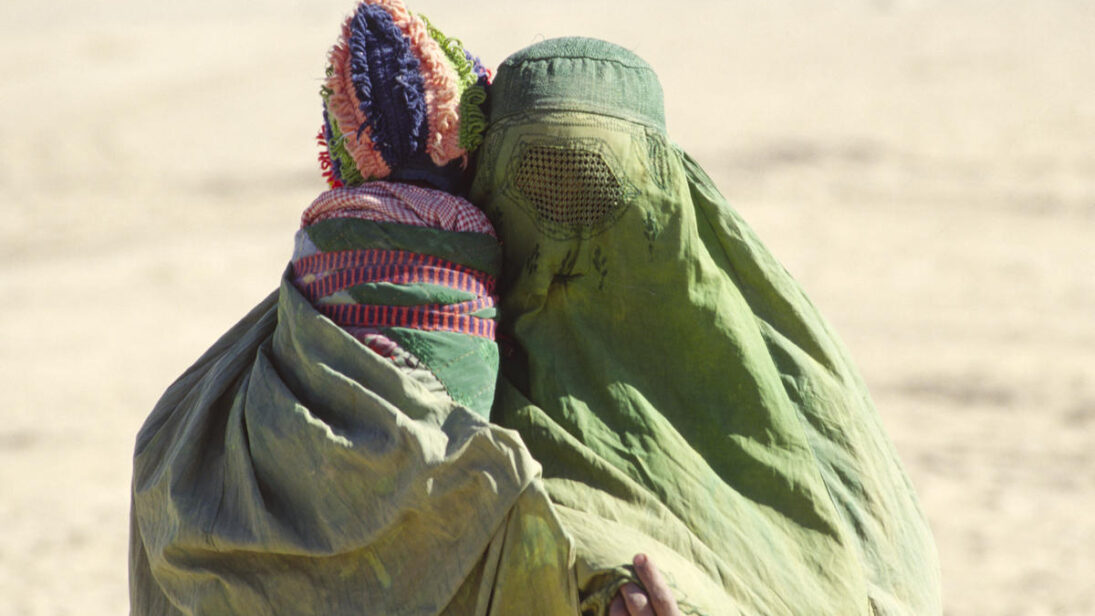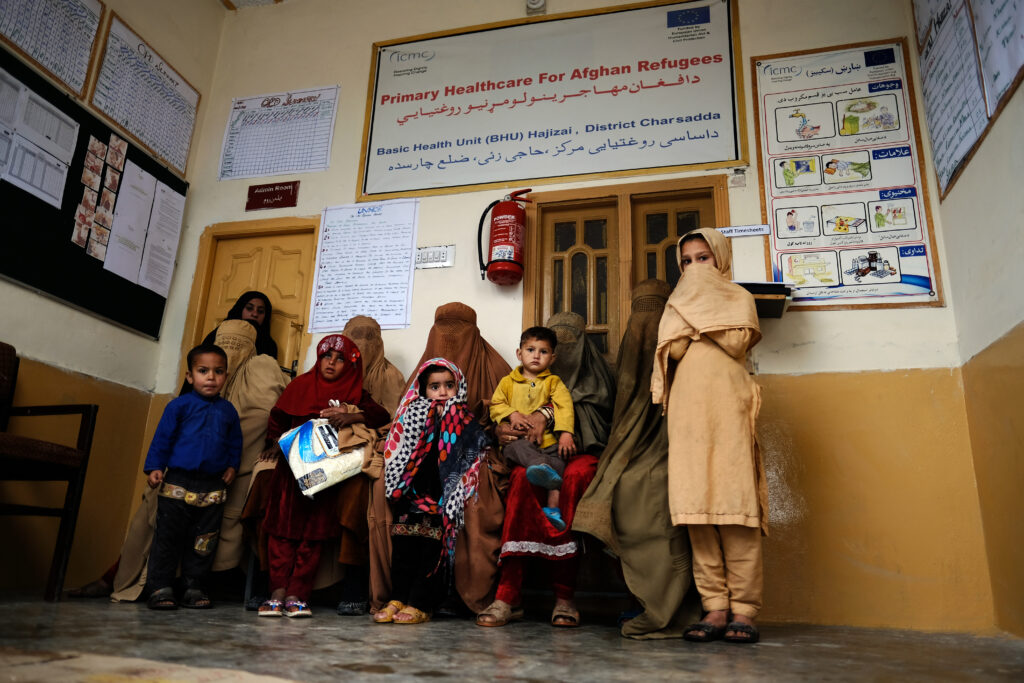
The situation in Afghanistan has become one of the world’s gravest humanitarian crises since U.S. troops withdrew from the country in August 2021. The dire situation on the ground has pushed 186,680 Afghan refugees and asylum seekers toward neighboring states. Pakistan has remained the preferred destination for Afghans fleeing persecution and poor economic conditions. The UNHCR reports that 117,550 Afghans – 62 percent of the total refugee population fleeing Afghanistan have arrived in Pakistan since 2021. The government of Pakistan differs on this number, reporting 250,000 Afghans have arrived in Pakistan since the withdrawal. Over 1.3 million registered Afghan refugees already live within Pakistan’s borders in addition to an estimated 500,000 undocumented migrants.
Pakistan remains stuck between a rock and a hard place as it struggles to balance its internal security and economic priorities with its international humanitarian obligations.
This refugee situation is particularly challenging for Pakistan due to the absence of a domestic refugee law and clearly communicated migration governance frameworks. Furthermore, the Afghanistan-Pakistan border—despite recent fencing—is a transit point for trade and the daily commute of irregular migrants, and remains susceptible to the penetration of transnational terrorism. The lack of legislative reform will result in the conflation of refugees with irregular migrants, posing both security and humanitarian challenges. Supported by aid from the United States, Pakistan must consider formulating a cohesive refugee policy for Afghans that abides by both international obligations and local governance frameworks.
Push and Pull Factors of Migration from Afghanistan to Pakistan
In Afghanistan, terrible living conditions, dire economic insecurity, and ongoing persecution by the Taliban are push factors for mass displacement to neighboring states. The World Bank reports a 34 percent decline in per capita income in Afghanistan from 2020 to 2022, while 47 percent of the Afghan population faces high levels of acute food insecurity. The situation of women and young girls is alarming under Taliban rule as well; the current government has curbed their right to mobility and education, resulting in inaccessibility to public life, health facilities, and employment. According to UNAMA, human rights conditions are also dire, especially for former U.S. allies and ex-Afghan government officials.
The primary pull factors for Afghan refugees to the ex-FATA border terrain in the Khyber Pakhtunkhwa region of Pakistan are geographical, ethnic, and socio-cultural. This terrain is inhabited by Pashtuns, an identity group with ethnolinguistic and cultural ties with Afghan Pashtuns arriving as refugees and irregular migrants. Pakistan is also the largest export destination for Afghan goods, with a steady increase of 17.9 percent in annual exports from 2003 to 2020. Historically, due to an unfenced border and the lack of transit control of goods and people between the two states, active illicit trade and transit routes exist, acting not only as facilitators of further migration but also of transnational terrorism and crime.
The Gaps in Pakistan’s Refugee Management Policy
Historically, while Pakistan has granted informal refuge to Afghan migrants on a prima facie, humanitarian basis, its broader response to refugees has remained largely dependent on its border security and foreign policy goals. Despite cooperative intervention by the United States and Pakistan and subsequent partnerships with the UNHCR and USAID, there is no national-level legislation on Afghan refugee management in Pakistan that adheres both to international law and local governance needs.
In the absence of a refugee law on the national-level, Pakistan relies on the UNHCR to determine the status of arriving refugees and manage the repatriation of those returning. The UNHCR operates based on the 1951 Refugee Convention and its 1967 protocol. Both assign international legal responsibilities to host states towards refugees, outline the principle of non-refoulment to prevent forced repatriation, and assign ‘refugee status’ to those seeking asylum. Ironically, Pakistan is not a signatory to either of the conventions that form key legal mandates of all UNHCR operations.

This reality results in a stark disconnect between Pakistani state policy and UNHCR mandates, most visible with Pakistan’s fencing of the shared border with Afghanistan in 2021. The Pakistani government and the UNHCR differ significantly: not only on the number of refugees that have arrived since the Taliban takeover but also on their views of the border fence and the existence of designated transit checkpoints. While the Pakistani government insists on its inability to sustain more refugees, the UNHCR has requested Pakistan to relax border security and has increased its funds to manage refugee flows. The disconnect between the Pakistani government and the various partner organizations it must work with poses humanitarian, security, and governance risks to the region.
Key Challenges to Border Security and Regularizing Migrants from Afghanistan
The UNHCR’s latest report shows that 68.4 percent of Afghan refugees reside outside designated camps, 52.3 percent living in Khyber Pakhtunkhwa (KP), and 24.5 percent in Baluchistan. Pakistan’s National Security Advisor has voiced concerns that the continuous inflow of migrants may result in a resurgence of terrorism in the border areas of KP and Baluchistan. Furthermore, since 2021, political leaders from the region have shown concern over the spillover of violent actors, arms, rebels, and radical ideologies from across the border. The close geographic and ethnic proximity with Afghan migrants results in easy integration at the social level, followed by even easier access to the rest of Pakistan. While there is no clear evidence proving the correlation between Afghan refugee movements and increased conflict, Pakistan’s inability to regularize migration from Afghanistan acts as a facilitator for the transnational movement of personnel, goods, finances, and potentially violent ideologies from across the border.
Another challenge in applying stringent border controls in the ex-FATA region is the response of the already-aggrieved local Pashtun population. Affinity, tribal networks, and cross-border ties are important markers of identity and community for Pashtuns. Extensive militarization against militancy in the ex-FATA region, coupled with the dire living conditions of tribal kin of Pashtuns in Afghanistan, have resulted in local Pashtuns wanting access to relatives across the border. Furthermore, the lack of government documentation in Pashtun-dominated areas poses a further challenge for Pakistan to introduce heightened border security and formal refugee laws.
In recent months, Pakistan has had two key developments in its refugee policies. First, the Pakistani government approved a new visa policy for Afghans seeking third-country settlement. Later in June, the government eased access for traders from Afghanistan to cross checkpoints. However, there has been little disclosure on the tax laws, trade facilitation, and long-term economic integration offered to the traders. Consequently, multiple challenges remain on both border security and the facilitation of regular migration that the government could resolve through legislative clarity.
U.S.-Pakistan Collaboration on Refugee Management and Border Control
Migration governance and security concerns at the Afghanistan-Pakistan border are important areas of convergence in the U.S.-Pakistan relationship. The United States is the largest donor of UNHCR funds in Pakistan, reflecting continued U.S. interest in the region despite its withdrawal from Afghanistan. The lack of international engagement with the Taliban – especially the United States has contributed to the deteriorating humanitarian crisis in Afghanistan and has resulted in increased refugee flows to Pakistan and other neighboring countries. Recent steps by the U.S. government to release a part of frozen Afghan funds could help relieve the Afghan population from an upcoming harsh winter.
These actions reflect awareness at the U.S. policy level that the U.S. must decouple its efforts towards relief and development for refugees from its regional strategic and security interests.
USAID operations in the ex-FATA region comprise another crucial facet of continued U.S. engagement in the border region. A major goal of the United States in the region is to counter terrorism through education, community reform, and capacity building of the security sector through policing reforms. Pakistan and the United States could also work together on drafting legislation to standardize Pakistan’s refugee policy. Bilateral cooperation could increase Pakistan’s state-level capacity to ensure border and internal security in the ex-FATA region while also systematically building the region’s capacity to reduce its reliance on the UNHCR. The United States could aid Pakistan in drawing out a comprehensive refugee policy and transit control mechanism to regulate irregular migration, provide the necessary aid and documentation for refugees, and make the border less susceptible to insurgent and criminal spillover in the long-term.
***
Click here to read this article in Urdu.
Image 1: United Nations Photo via Flickr
Image 2: EU Civil and Humanitarian Protection Aid via Flickr


